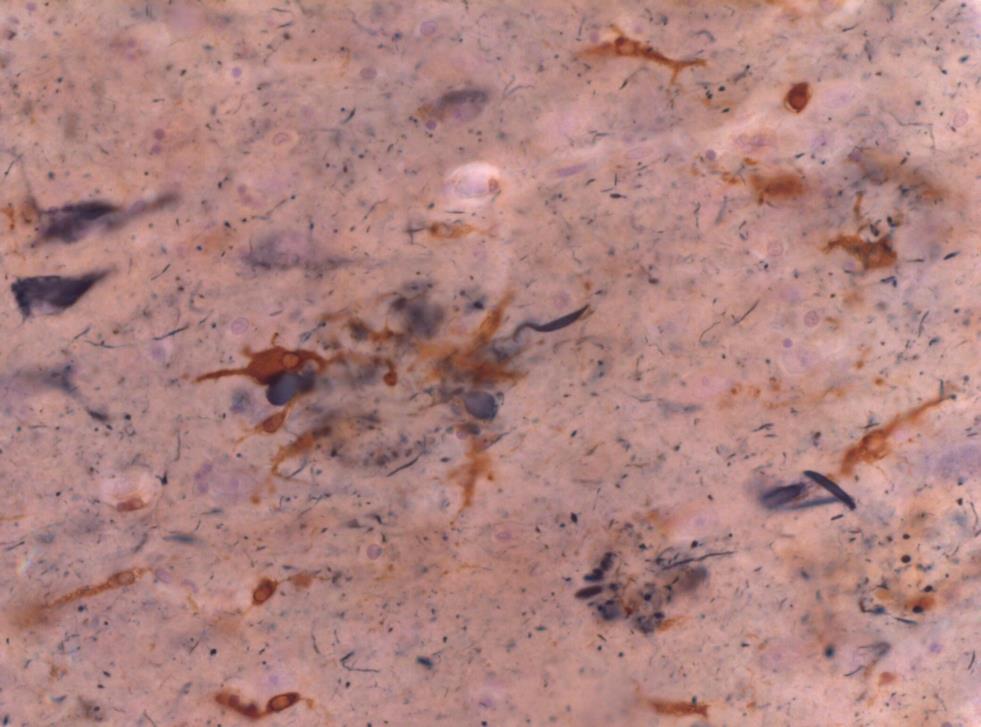
By Michelle Koidin Jaffee
A new study of human brains after death suggests that age-related accumulation of iron could serve as a possible trigger contributing to the formation of neuritic plaques in the brain that have been linked to late-onset Alzheimer’s disease.
The study, published online in the Journal of Alzheimer’s Disease and led by UF neuroscience professors Wolfgang J. Streit, Ph.D., and Habibeh Khoshbouei, Ph.D., Pharm.D., and Ingo Bechmann, M.D., a professor of neuroanatomy at Leipzig University in Germany, describes findings in which the formation of neuritic plaques begins with degeneration of specific neurons, called large projection neurons, in the hippocampus and cerebral cortex, then followed by accumulation of the protein amyloid-beta.
The study involved the examination of brains selected from approximately 1,000 consented participants following their deaths at Leipzig University Hospital. The research team reported their analysis that iron accumulation associated with advanced age and a type of cell death known as ferroptosis in the central nervous system may trigger at least two mechanisms that ultimately contribute to the formation of neuritic plaques, formerly known as “senile plaques.”
“The study suggests that, contrary to widespread belief, amyloid-beta protein does not cause neuronal degeneration,” Streit said. “Instead, we have found that neuronal death is most likely caused by too much iron in the brain.”
He added that preventing iron accumulation in the aging brain could eventually hold promise as an effective treatment strategy.
The study adds to the emerging research further evaluating the role of iron in neurodegeneration. “The next step is to determine how and why the human brain develops an iron overload with increasing age,” Streit said.

